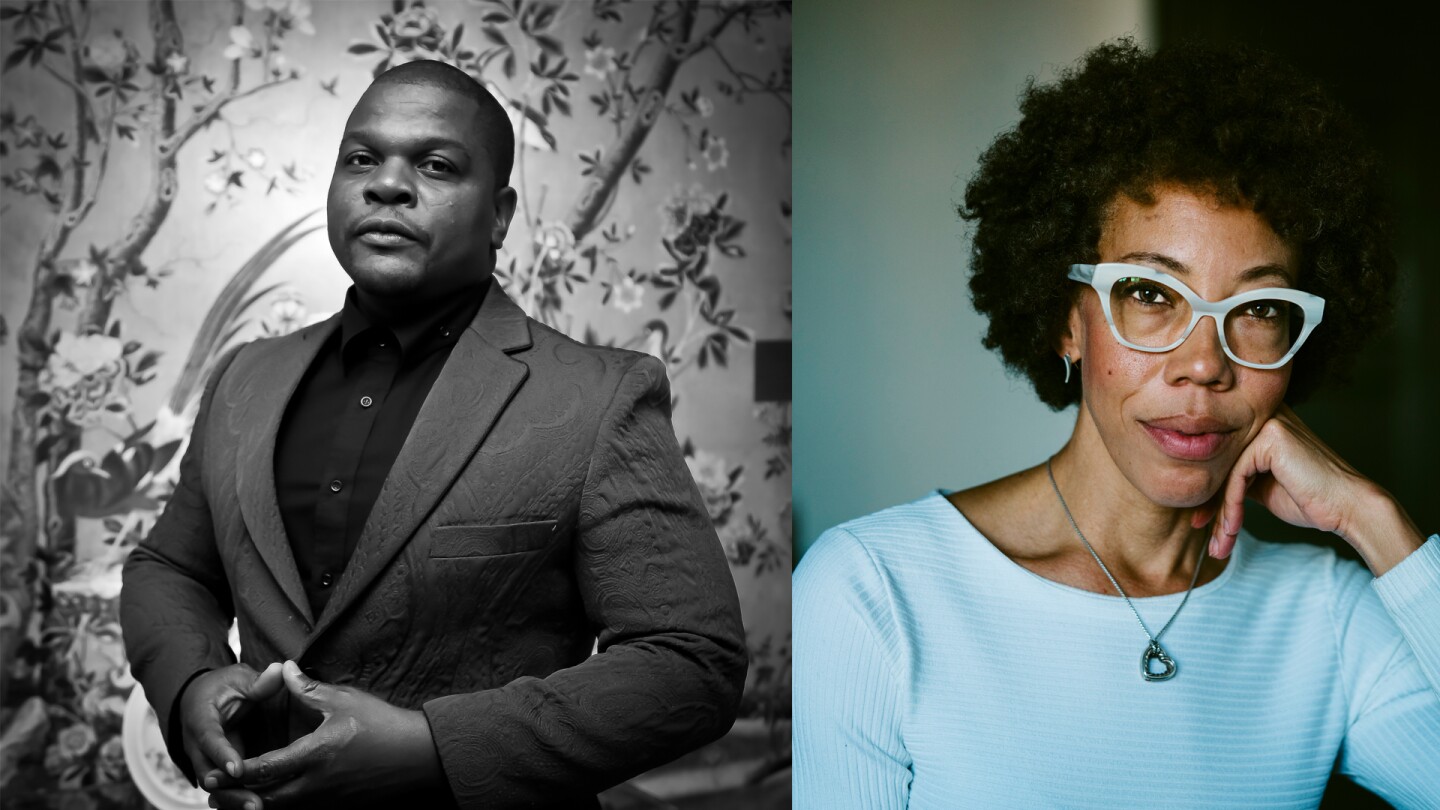On Monday, portraits of President Barack Obama and Mrs. Michelle Obama were unveiled at the National Portrait Gallery. The works, by artists (respectively) Kehinde Wiley and Amy Sherald, generated several hours of freelance art criticism and wistful remembrances—at least in my social media feeds. Days later, visitors to Washington, D.C., are clamoring to see the paintings in person and are lined hundreds deep in stanchioned queues all the way into the courtyard of the museum.
Dorothy Moss, curator of painting and sculpture at the National Portrait Gallery, oversaw the commission of the Sherald portrait of the former First Lady. She’s thrilled, and not just because of the media splash the unveiling made; the paintings are worth seeing because they’re great art on a host of levels.
“These portraits are about more than the subjects,” says Moss. “They are about the history of representation and who has been included in dominant historical narratives. These portraits represent a breakthrough and departure from the tradition of conservative, formal portraiture.”

The Obamas’ portrait artists of choice, Kehinde Wiley and Amy Sherald
Courtesy of the Smithsonian Institution
Kehinde Wiley’s presidential portrait is generating attention because it’s so different from the stuffy, classical poses many expect from an official portrait. But it’s by no means unprecedented. “I see some parallels with Elaine de Kooning’s portrait of John F. Kennedy in terms of portraiture that is representative of the height of contemporary art,” says Moss. But it’s more than that. “These are both artists who are at the forefront of contemporary portraiture and have been grappling with critical discourse around race,” she says. “They’ve been making those visible who haven’t been visible in historical portrait paintings displayed in museums.”
Starting with President George H.W. Bush in 1994, the National Portrait Gallery has commissioned official presidential portraits toward the end of each term. Curators at the National Portrait Gallery offer suggestions for artists who might be appropriate for the President and First Lady, who then make the final decision on the artists. The Obamas worked closely with their artists during the process. (The White House commissions a separate portrait, which is then placed in the only other official presidential collection.)

Amy Sherald’s portrait of former First Lady Michelle Obama, at The Smithsonian’s National Portrait Gallery
Courtesy of the Smithsonian Institution
“I find inspiration in these when standing in front of them,” says Moss. “I take in the great significance of standing before such innovative portraits, knowing their historical significance and that the artists and the subjects had such close personal connections.”
Sherald’s portrait of Michelle Obama is currently on the first floor as part of the gallery’s Celebratory Installations, where it’s kept company by other new acquisitions. It will move to the third floor permanent collection soon. The presidential portrait resides in the permanent “America’s Presidents” exhibition, where it is displayed chronologically along with portraits of predecessors and other associated artifacts. (Another recent acquisition is the oldest known presidential photograph, an 1843 daguerreotype of President John Quincy Adams by Philip Haas, in case you were wondering about JQA IRL.)

Kehinde Wiley’s portrait of former President Barack Obama, at The Smithsonian’s National Portrait Gallery
Courtesy of the Smithsonian Institition
The Smithsonian Institution’s National Portrait Gallery, located at 8th and F Streets NW in Washington, D.C., is open daily from 11:30 a.m. to 7:00 p.m. Admission is free. It is worth noting that although crowds have been heavy during the Obama portraits’ first days on display, these paintings are permanent residents of the National Portrait Gallery, so plan a visit at your leisure. For now, statistically speaking, Tuesdays are your best bet for finding a little elbow room; Saturdays, no surprise, are the worst. The museum estimates that on a typical day, visitors can expect to wait 15 to 20 minutes to see Mrs. Obama’s portrait and 30 to 40 minutes to see Mr. Obama’s. Naturally, the museum expects a dramatic bump in attendance during the Presidents’ Day weekend.








